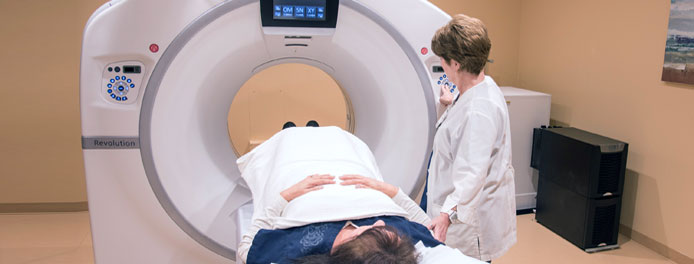Computed Tomography (CT)

Also known as a “CAT scan,” CT combines multiple x-ray images to produce a two-dimensional cross-sectional view with as much as 100 times more clarity than conventional x-ray.
CT imaging is used to clearly show soft tissue, like the brain, as well as dense tissue, like bone. The information gathered during a CT scan is processed by a computer and interpreted by a radiologist to diagnose, or rule out, disease.
Some CT scans require the use of a contrast medium. Given intravenously, the contrast agent highlights certain body parts to enable the radiologist to better see any abnormalities. CT scans of the abdomen and pelvis often require the patient to drink a barium-based liquid to outline the intestines for better viewing.

